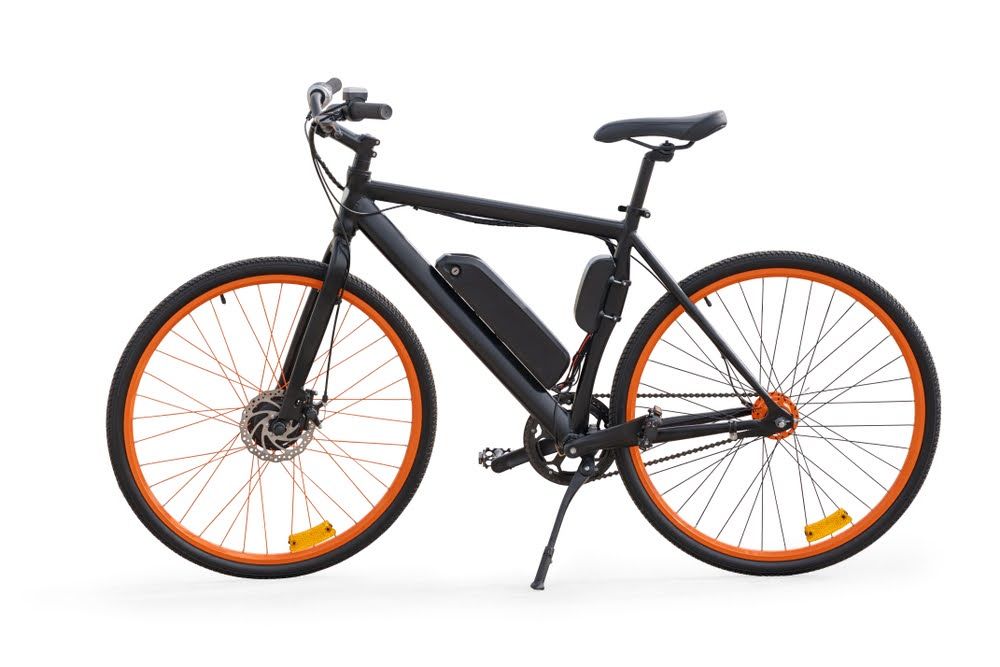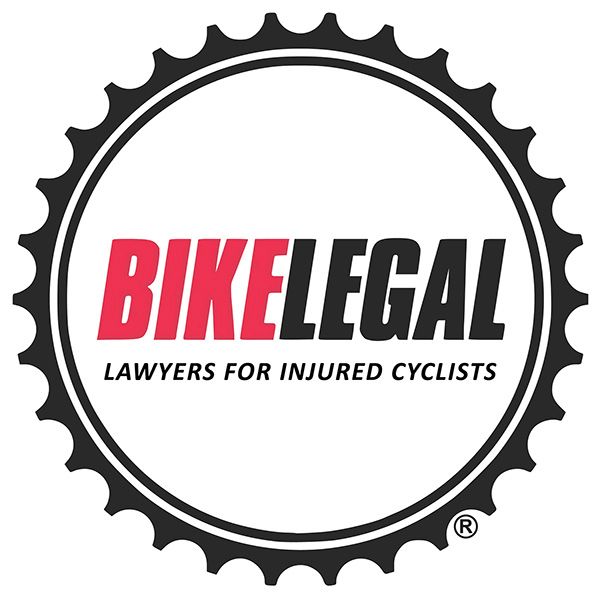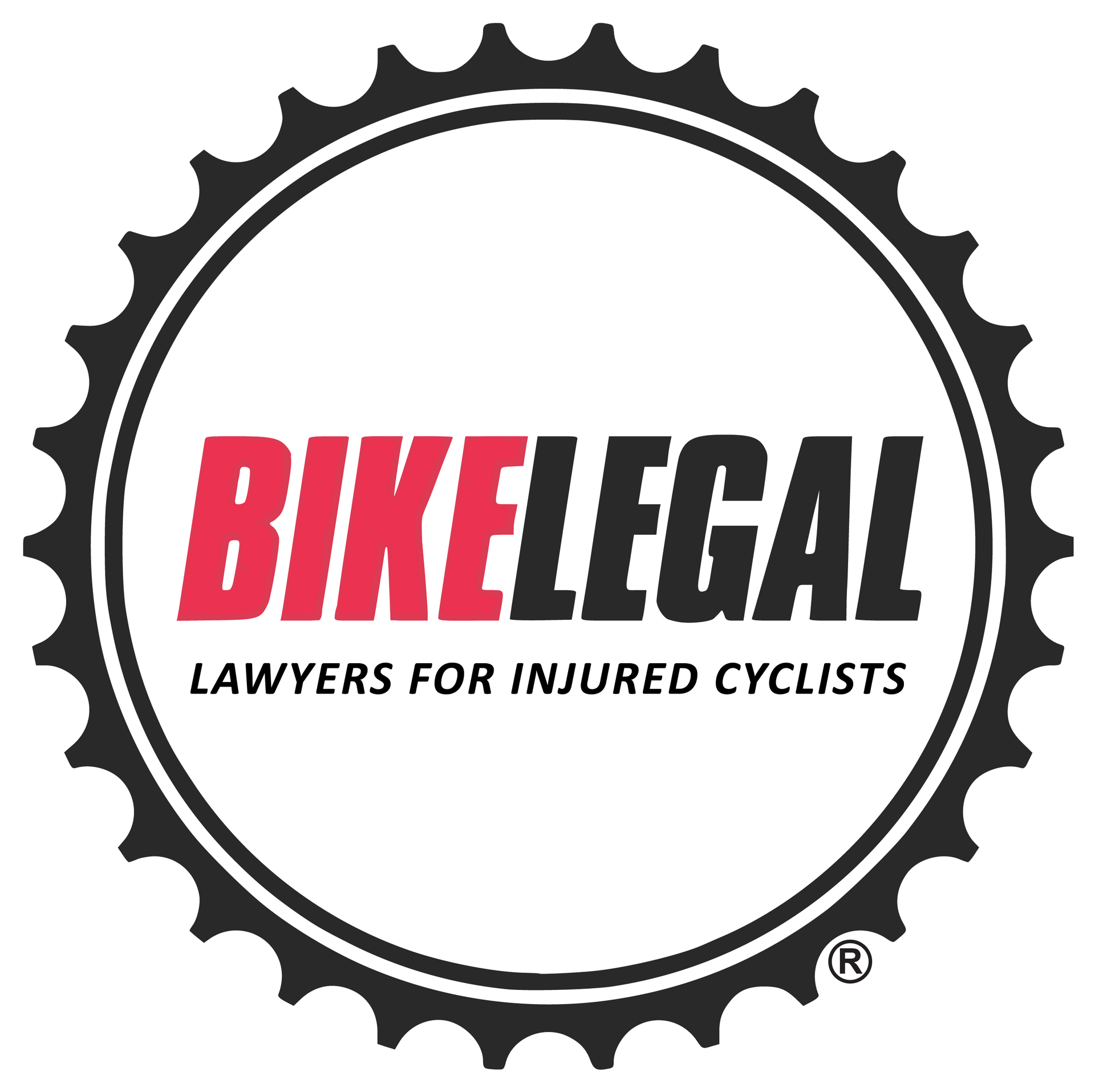California Electric Bike Rebate Program & Incentives (2025): Eligibility, Benefits, and How to Apply
Follow us on
social media!
Looking to save money on a new electric bicycle in California? The California Electric Bike Rebate Program 2025 offers up to $2,000 in point-of-sale incentives to help low-income residents purchase safe, reliable e-bikes. This initiative makes sustainable transportation more affordable while encouraging cleaner alternatives to car travel. But to take full advantage of these savings, you need to understand how the program works—who qualifies, which e-bikes are eligible, and how to apply before funding runs out.
This guide covers everything you need to know about California’s statewide and local e-bike rebate programs, including eligibility criteria, step-by-step application instructions, and how to combine multiple incentives for maximum savings.
Table Of Contents
What is the California E-Bike Incentive Project?
The California E-Bike Incentive Project represents California's investment in sustainable transportation accessibility. Administered by the California Air Resources Board (CARB) and Pedal Ahead, this initiative specifically targets low-income residents and disadvantaged communities, assisting those who would benefit most from affordable transportation alternatives.
Program Timeline and Current Status
The California E-Bike Incentive Project launched its first statewide application window in December 2024, offering 1,500 vouchers. The second application window recently closed, having allocated $2 million to fund approximately 1,000 e-bikes. Future application windows will be announced. Interested residents can subscribe to the program's email notification list through the official website to receive updates on upcoming opportunities.
California Rebate Amounts Available
The program offers substantial point-of-sale vouchers structured as follows:
- Base voucher: Up to $1,750 for residents with income under 300% of the Federal Poverty Level
- Priority applicant bonus: An Additional $250 for those meeting lower income thresholds or living in disadvantaged communities
- Maximum total: $2,000 per eligible individual
With the voucher, you can purchase an eligible e-bike and:
- Safety accessories (helmets, locks)
- Functional add-ons (racks, fenders, lights)
- Professional assembly fees
- Extended warranties
This comprehensive approach ensures new e-bike owners receive complete transportation solutions rather than just the bicycle itself.
If you're interested in learning about nationwide incentives beyond just California, read our guide E-Bike Rebates and Tax Credits in the U.S., which provides a comprehensive overview of federal and state programs across the country.
Types of E-Bikes Eligible for California Rebates

Not all electric bicycles qualify for California's rebate program. Understanding eligibility criteria helps ensure successful voucher redemption.
Standard E-Bikes (Class 1-3)
For a standard e-bike to qualify for the rebate, it must meet these specifications:
- Must be a Class 1, 2, or 3 e-bike:
- Class 1: Features pedal assistance only (no throttle), with motor support cutting off at 20 mph
- Class 2: Includes both pedal assistance and throttle capability, with a maximum assisted speed of 20 mph
- Class 3: Limited to a top speed of 28 mph, pedal assist only.
- Technical specifications:
- Motor power cannot exceed 750 watts
- Must include functional pedals for human propulsion
- Must feature battery-powered front lighting integrated with the e-bike's electrical system
- Must include a rear light (either integrated or battery-operated)
- Must carry certification from an accredited laboratory confirming compliance with either ANSI/CAN/UL-2849 or EN-15194 safety standards
- Must come with at least a one-year warranty covering all electrical components
- Must be professionally assembled upon delivery
Importantly, full-suspension e-bikes are eligible for rebates provided they meet all the above requirements.
The California E-Bike Incentive Project also extends support to specialized e-bike types, recognizing the diverse transportation needs of different riders.
Cargo and Adaptive E-Bikes
Cargo e-bikes designed for transporting passengers, groceries, or other loads must meet the same core requirements as standard models: 750-watt maximum motor, operable pedals, integrated lighting, safety certification, warranty coverage, and professional assembly. The key distinction is their design specifically for carrying heavier or bulkier loads than standard e-bikes.
Adaptive e-bikes cater to riders with diverse mobility needs, offering a range of options including electric tricycles, tandems, handcycles, recumbents, and wheelchair-compatible models. These must meet the same technical standards while accommodating alternative pedaling methods (hand or foot pedals) appropriate to the rider's abilities. Approval for adaptive models may take longer due to their specialized nature.
Types of Electric Bicycles that do NOT Qualify for California Rebates
Several categories of e-bikes explicitly do not qualify for California's rebate program:
- Used e-bikes
- E-Bike conversion kits
- E-bikes modified with aftermarket electrical components
- Models lacking the required lighting systems
- E-bikes outside of the 3-class system
- Electric scooters, mopeds, or other motorized vehicles not classified as e-bikes under California law.
These eligibility requirements ensure that rebate recipients acquire safe, reliable transportation that complies with California's standards for e-bike performance and safety.
Want to understand the differences between Class 1, 2, and 3 e-bikes? Our guide, Everything You Need to Know About E-Bikes, breaks down each category and explains how they affect where you can legally ride. For California-specific rules and restrictions, see our detailed guide on California E-Bike Laws 2025.
Eligibility Requirements for California's E-Bike Rebate
Understanding eligibility criteria is essential for successfully accessing California's e-bike rebate program.
Residency and Age Requirements
To qualify for the California E-Bike Incentive Project, applicants must:
- Be California residents aged 18 or older
- Possess a valid California Driver's License, California AB 60 License, or California ID Card
- Limit applications to one voucher per person (Individuals can only get one voucher each, but there is no limit to how many people from the same household can apply as long as each person qualifies)
Income Qualifications
The program uses Federal Poverty Level (FPL) thresholds to determine eligibility:
- All applicants: Household income must not exceed 300% of FPL
- Priority applicants: Household income at or below 225% of FPL receives an additional $250
These thresholds translate to the following income limits:
300% FPL (All Eligible Applicants):
- 1-person household: $45,180
- 2-person household: $61,320
- 3-person household: $77,460
- 4-person household: $93,600
- Each additional person: Add $16,140
225% FPL (Priority Applicants):
- 1-person household: $33,885
- 2-person household: $45,990
- 3-person household: $58,095
- 4-person household: $70,200
- Each additional person: Add $12,105
These income limits ensure the program serves those for whom e-bikes would otherwise remain financially inaccessible.
How to Apply for California's E-Bike Rebate

Securing an e-bike voucher requires following a specific application process. Preparation and understanding of each step increases the likelihood of successful applications.
Step-by-Step Application Process
- Create an account: Visit the official California E-Bike Incentive Project website and register during an open application window.
- Complete the online application: Provide personal information, including name, address, and contact details.
- Upload required documentation: Submit proof of California residency and income verification (details below).
- Complete the education component: Watch two
required videos:
* E-bike safety basics (12 minutes)
* Climate impact training (5 minutes) - Submit your application: Once all information is provided and verified, submit the completed application.
- Await approval: Processing may take up to 90 days, though many applications are processed more quickly.
- Receive your voucher: If approved, you'll receive an email with your voucher code and expiration date.
- Purchase your e-bike: Visit an approved retailer within 45 days to redeem your voucher.
Application windows open periodically and operate on a first-come, first-served basis. Preparation facilitates prompt submission when the windows open.
Required Documentation
To complete applications, the following documents are necessary:
For residency verification (one of the following):
- Current California Driver's License
- California AB 60 License
- California ID Card
For income verification (one of the following):
- Most recent federal tax return transcript
- Proof of enrollment in qualifying assistance programs (if taxes were not filed)
- Other acceptable income verification documents, as specified by the program
Having these documents digitized and ready to upload streamlines the application process significantly
Processing Times and Voucher Timeline
After submitting an application to the California E-Bike Incentive Project, the timeline from application to voucher issuance typically extends up to 90 days. This period encompasses residency verification, income qualification review, completion of required education/safety training, and administrative processing.
Applications with complete documentation typically move more quickly through the system. Once approved, applicants receive an email containing their voucher code, approved incentive amount, and a 45-day expiration deadline for redemption at participating retailers.
To expedite the process:
- Submit clear, complete documentation initially
- Complete training components promptly
- Research eligible e-bikes and retailers while waiting
- Respond quickly to any information requests
Planning for the 45-day redemption window is essential, as expired vouchers require reapplication during future application cycles.
Can You Combine California Rebates and Tax Credits?
Understanding how various financial incentives interact maximizes potential savings on e-bike purchases. California residents have multiple opportunities to stack benefits for significant cost reductions.
Please note: The California E-Bike Incentive Project's voucher funds can be combined with other incentive programs. However, they cannot be combined with any CARB-led programs, such as Clean Cars 4 All (CC4A). Additionally, the total value of all combined incentives cannot exceed the total purchase price of the e-bike and other eligible items.
CARB-led programs are initiatives administered by the California Air Resources Board (CARB), a state agency responsible for air quality and climate programs. These programs often offer vehicle-related incentives, including EV rebates and pollution reduction grants. Because the e-bike rebate is already funded and managed by CARB, applicants are not allowed to receive multiple benefits from overlapping CARB programs for the same purchase.
State and Local Rebate Stacking
The California E-Bike Incentive Project vouchers can generally be combined with local rebate programs, creating substantial savings opportunities:
- Multiple government programs: Most state and local rebate programs can be used together without restrictions. For example, residents of San Mateo County and the City of Los Banos might qualify for both the statewide $2,000 voucher and Peninsula Clean Energy's $1,000 rebate, potentially reducing costs by $3,000.
- Regional air district incentives: Income-eligible South Coast AQMD residents can potentially combine the state voucher with the South Coast Air Quality Management District's Replace Your Ride program to receive up to $12,000 to trade their old vehicle with a newer, greener one, or get $7,500 for an e-bike.
- Income-based eligibility alignment: Many local programs use similar income qualification standards as the state program, meaning those who qualify for one often qualify for others.
- Documentation efficiency: Documentation prepared for the state program often satisfies requirements for local programs, streamlining multiple applications.
Additional Combinations
- Employer transportation benefits: Many California employers offer commuter benefit programs that can be applied toward e-bike purchases in addition to government rebates, particularly for employees who commit to regular bike commuting.
- Manufacturer promotions: Several e-bike manufacturers offer California-specific promotions designed to complement state and local incentives, creating triple-stacking opportunities during specific promotional periods.
When pursuing multiple incentives, always verify current program compatibility, as policies may change, and some combinations might have specific requirements or limitations.
Local California E-Bike Rebate Programs
While the statewide California E-Bike Incentive Project offers substantial rebates, many local programs provide additional opportunities to save on e-bike purchases. These regional initiatives often have different eligibility requirements and rebate amounts.
Bay Area Electric Bike Rebate Programs
The Bay Area offers several established e-bike incentive programs:
- Available to: San Mateo County and City of Los Banos residents
- Rebate amount: Up to $1,000
- Eligibility: Must participate in CARE or FERA energy programs
- Opening: Year-round starting May 2025
- Covers: New e-bikes, assembly fees, locks, and helmets
- Limit: One e-bike per person, two per address over the program duration
- Available to: Contra Costa County residents
- Rebate amount: $150 standard rebate; $300 for income-qualified residents
- Income qualification: Household income at or below 400% of Federal Poverty Guidelines
- Process: After-purchase rebate for e-bikes bought within the last six months
- Limit: One rebate per person/home address
Southern California Electric Bike Rebate Programs
Southern California also offers several local incentive options:
- Available across multiple Southern California counties
- Rebate amount: Up to $12000 when replacing their own older, high-polluting vehicle with a newer vehicle (including ebikes)
- Can be applied toward e-bike purchases
- Administered through the South Coast Air Quality Management District
Other Local Initiatives
Several other regions throughout California have developed their own e-bike incentive programs:
Santa Clara, California Electric Bike Rebate Program
The City of Santa Clara offers a rebate program for residents purchasing electric bikes (e-bikes) as part of its initiative to encourage sustainable transportation.
Rebate Amount:
- Up to $300 for the purchase of a new e-bike.
- Income-qualified individuals may receive an additional $200 rebate.
- Potential rebate up to $500.
Eligibility:
- Residents of Santa Clara.
- Income-qualified individuals are eligible for additional rebates.
Application Process:
- Purchase a new e-bike.
- Apply within 60 days of purchase.
- Receive the rebate.
Program Status:
- Ongoing. Apply today to claim your rebate.
For more information, visit SiliconValleyPower
Roseville, California Electric Bike Rebate Program
Roseville Electric offers an e-bike rebate program to help residents reduce the cost of purchasing electric bikes.
Rebate Amount:
- $100–$300 based on the cost of the e-bike.
- Income-qualified residents can receive $300–$600.
Eligibility:
- Residents of Roseville.
- E-bike must be a DMV Class 1, 2, or 3 e-bike with the following specifications:
- Electric motor ≤ 750 watts
- Fully operable pedals
- Maximum speed ≤ 28 mph
Application Process:
- Rebate applications are processed on a first-come, first-served basis until funds are exhausted or the program is closed.
Program Status:
- Ongoing.
For more information, visit Roseville Electric E-bike Rebate Program.
Sacramento, California Electric Bike Rebate Program
The Sacramento Metropolitan Air Quality Management District offers a grant program to help residents purchase electric bikes.
E-Bike Grant
The CC4A grant program provides funds for residents interested in purchasing an electric bike.
Grant Amount:
- Up to $7,500 for the purchase of a new e-bike.
Eligibility:
- Open to Sacramento residents.
- E-bike must be purchased from participating retailers.
Application Process:
- Purchase a new e-bike from a participating retailer.
- Submit an application to claim the grant.
Program Status:
- Ongoing. Applications are processed until funds are exhausted.
Participating Retailers:
- Peak Adventures, 6000 J St., Sacramento, CA 95819
- Ken’s Bike-Ski-Board Inc., 650 G St, Davis, CA 95616
- Hyper Rides (Marysville), 414 D St, Marysville, CA 95901
- Hyper Rides (Rocklin), 2330 Sunset Blvd. #140, Rocklin, CA 95765
- Sam’s Town Cyclery, 4050 Durock Rd Ste 1, Shingle Springs, CA 95682
- Stealth Tahoe, 11253 Brockway Rd #103a, Truckee, CA 96161
- Neighborhood Bike Shop, 5522 H St, Sacramento, CA 95819
- Practical Cycle LLC, 905 Leidesdorff Street, Folsom, CA 95630
For more details, visit Sacramento Air Quality Management District’s E-Bike Program.
Santa Barbara, California Electric Bike Rebate Program
Santa Barbara Clean Energy offers a discount to residents who purchase electric bikes, encouraging sustainable and eco-friendly transportation.
Electric Bikes of Santa Barbara Discount
Santa Barbara Clean Energy customers are eligible for a discount on electric bikes.
Discount Amount:
- $200 off any e-bike from Electric Bikes of Santa Barbara.
Eligibility:
- Open to all Santa Barbara Clean Energy customers.
Application Process:
- Email SBCEPrograms@SantaBarbaraCA.gov with your name, address, and SBCE account number (same as Edison account number).
- Receive a discount code from SBCE staff via email.
- Bring the discount code to Electric Bikes of Santa Barbara at 1345 State Street to redeem the discount.
Program Status:
- Ongoing. Contact SBCE for more details.
For further information, visit Electric Bikes of Santa Barbara.
E-Bike Incentives Are Growing, But Safety Must Keep Pace
While California's e-bike rebate programs represent significant progress toward sustainable transportation, financial incentives alone cannot address the broader challenges facing cyclists. The transition to widespread e-bike adoption requires comprehensive improvements to cycling infrastructure and safety measures.
The Safety Gap: California Bicycle Crash Statistics
Despite increasing e-bike adoption, California's roads remain dangerous for cyclists:
- In 2022, California recorded 177 bicycle fatalities, a troubling 36% increase from 130 deaths in 2021. It is worth noting that 2022 was the first year the NHTSA included e-bikes as bicycles, rather than as motor vehicles, in their statistics.
- California consistently ranks among the top 10states with the highest cyclist fatalities per capita
These statistics highlight the urgent need for infrastructure that aligns with the state's ambitious e-bike adoption goals.
For a more comprehensive analysis of bicycle accident trends and safety regulations throughout the state, see our detailed guide onCalifornia Bicycle Laws and Accident Statistics.
Infrastructure Improvements
For e-bike programs to achieve their full potential, California must address several critical areas:
- Protected bike lanes: Physical separation between cyclists and motor vehicles significantly reduces collision risk
- Improved visibility measures: Enhanced lighting, reflective road markings, and dedicated signals at intersections would significantly reduce collision risk
- Enforcement of safety laws: Stricter laws and penalties are necessary to protect cyclists from accidents and negligent drivers. This includes imposing harsher penalties for drivers who violate cycling-related traffic laws, such as failure to yield to cyclists, illegal parking in bike lanes, and reckless driving near cyclists.
E-bike Safety Laws and Legislation:
In recent years, California has enacted several laws to enhance e-bike safety, clarify classifications, and address growing concerns about reckless riding and battery-related fires.
- Class Definitions & Speed Limits: Assembly Bill 1774 bans devices that modify e-bike speed and clarifies throttle restrictions across Class 1–3 models.
Learn more in our article:
New California Law Bans Speed-Modifying Devices for Electric Bicycles
- Youth Age & Helmet Requirements: AB 1778 sets a minimum age of 16 for Class 2 e-bikes and requires helmets for all Class 2 riders, with local enforcement authority in Marin County.
Learn more in our article:
AB 1778 Allows Marin County to Enforce Helmet and Age Rules for E-Bike Riders
- San Diego Youth Restrictions: AB 2234 gives San Diego cities the power to ban kids under 12 from riding e-bikes.
Learn more in our article:
San Diego Cities Can Now Ban Kids Under 12 From Riding E-Bikes
- Battery Safety: New laws mandate UL-certified batteries and chargers to reduce the risk of fires.
Learn more in our article: California's E-Bike & Battery Safety Law: Senate Bill 1271 Explained (2025–2028)
- Reckless Riding & Local Crackdowns: Cities like Santa Barbara and several in Orange County have introduced new rules targeting stunts, wheelies, and unsafe group riding.
- Learn more in our article:
Santa Barbara Updates Bicycle and E-Bike Laws [2025]
- Learn more in our article:
The E-Bike Epidemic: Bridging the Regulatory Gaps in Orange County
These laws reflect California’s effort to balance e-bike access with public safety. Riders should stay informed and follow local rules to avoid fines or disqualification from rebate programs.
Organizations like the California Bicycle Coalition advocate for these complementary measures, recognizing that rebate programs work best when paired with comprehensive safety initiatives.
Bike Legal’s #1 Piece of Advice: Check Your Auto Policy for UM/UIM Coverage
Whether you’re a new e-bike rider or a seasoned cyclist, Bike Legal’s top recommendation for protecting yourself is to check your auto insurance policy to make sure it includes Uninsured/Underinsured Motorist (UM/UIM) coverage.
Why It Matters
Many drivers in California either carry the bare minimum insurance or none at all. If you're hit by one of these drivers while riding your e-bike, UM/UIM coverage on your own auto policy can step in to pay for your injuries, medical bills, lost wages, and more.
This coverage applies not only to motorists but also to cyclists and pedestrians. It’s one of the most powerful forms of financial protection you can have as a rider.
How to Check and Add It
- Call your insurance provider and ask: “Do I have UM/UIM coverage? If not, how much would it cost to add it?”
- You’ll typically be offered options that match your liability limits—consider choosing higher coverage if possible.
- Adding UM/UIM is often just a few dollars more per month and can provide hundreds of thousands of dollars in protection.
Don’t Wait Until After a Crash
Unfortunately, you can’t add UM/UIM after you’ve already been hit. Take five minutes today to check your policy—it’s one of the smartest safety decisions you can make as a cyclist.
Injured While Riding an E-Bike? Bike Legal Can Help.

Bike Legal is a personal injury law firm built by cyclists, for cyclists. We don’t just handle bicycle accident claims; we specialize in them. Our team understands the unique aspects of bicycle crashes: the types of injuries cyclists suffer, the damage to expensive bikes and gear, and the time lost from work. We know how to build strong cases that maximize compensation and hold negligent parties accountable.
We’ve represented cyclists across California in all types of crashes, whether caused by careless drivers, unsafe road conditions, or hit-and-run incidents. We also stay up to date on California’s evolving e-bike laws and rebate programs, so we can fully support both traditional and electric bike riders.
Why Bike Legal?
- We’re bicycle accident lawyers who focus exclusively on bicycle crash claims
- We understand how to fight insurance companies that try to minimize cyclist injuries
- We are cyclists just like you. We advocate for safer streets and cyclists’ rights.
If you’re searching for a bicycle accident lawyer, let us help you protect your rights and get the compensation you deserve.
📞 Call 877-BIKE LEGAL (877-245-3534) or contact us online for a free consultation. No pressure, no fees unless we win
Frequently Asked Questions
What is the maximum rebate available through California’s e-bike incentive program?
The California E-Bike Incentive Project offers a base voucher of $1,750 to qualifying applicants, with an additional $250 for priority applicants, totaling $2,000.
Can I combine the California e-bike rebate with other local or manufacturer incentives?
Yes. In most cases, California's e-bike voucher can be combined with local rebates, manufacturer discounts, or employer programs. However, it cannot be combined with other CARB-led programs like Clean Cars 4 All (CC4A). Always check each program’s specific rules.
What if I miss the California e-bike rebate application window?
Future windows will open. The statewide program opens application windows periodically throughout the year. Email notifications are available through the official website to alert interested parties when new windows open. Local programs may have different schedules, so check with regional transportation authorities.
What types of e-bikes qualify for California’s rebate?
Eligible e-bikes must be Class 1, 2, or 3 models with a motor under 750 watts. They must have operable pedals, front and rear lights, UL 2849 or EN 15194 certification, a one-year electrical warranty, and professional assembly. Cargo and adaptive e-bikes qualify if they meet these standards. Used bikes, conversion kits, and modified models are not eligible.
What if my income changes after applying for the California Electric Bike Incentive Project?
Eligibility is based on documentation provided at application time. Changes in income after voucher approval typically don't affect eligibility. However, providing false information on applications could result in disqualification.
How long does it take to get a California e-bike voucher?
The application review process can take up to 90 days, depending on volume. Once approved, your e-bike voucher is valid for 45 days. If it expires before you use it, you’ll need to reapply during a future application window.

